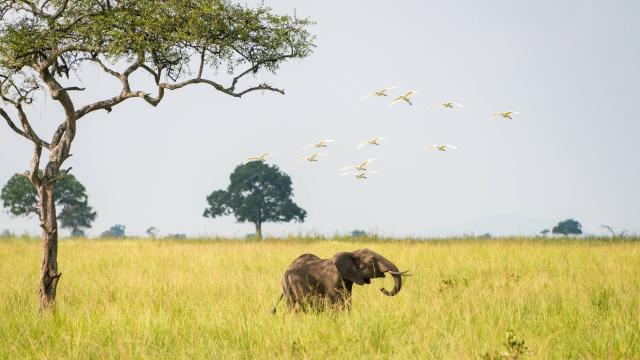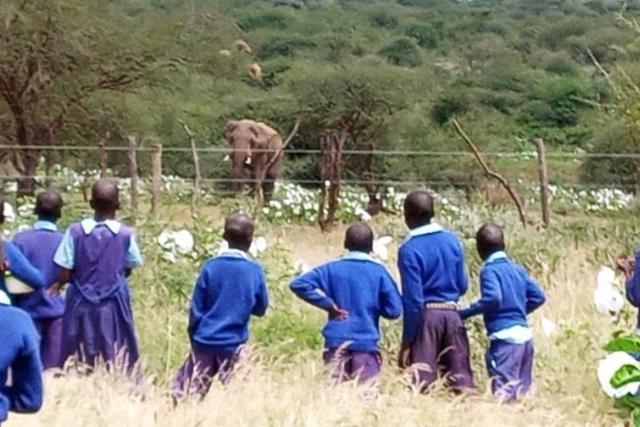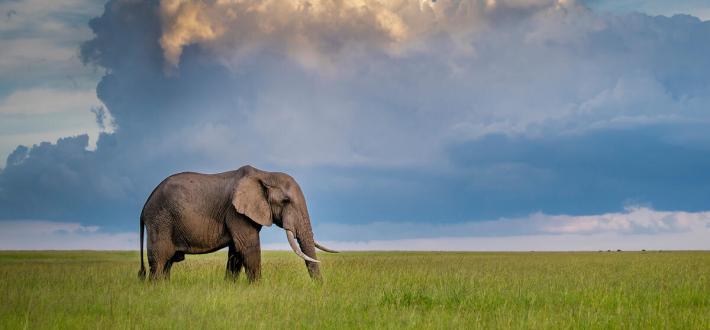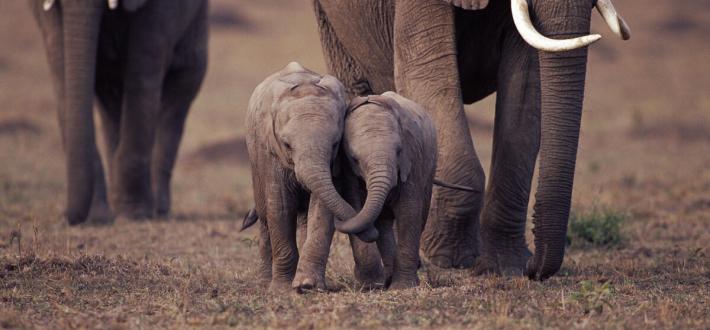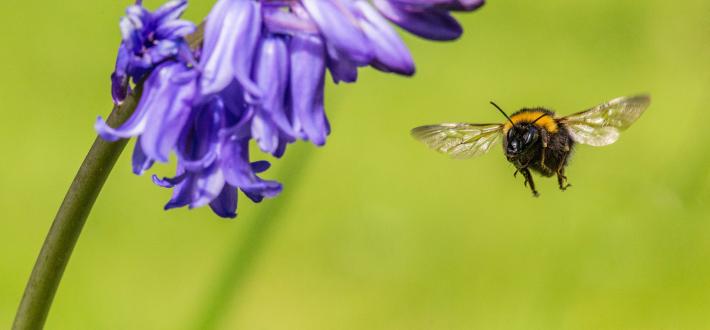On this day we celebrate Elephants!
To coincide with World Elephant Day, we’d like to invite you to get to know more about this amazing species. We've got some simple and fun ways to show your support; from learning some fascinating facts about elephants, to crafting an elephant mask.
"I allowed the pupils to go for lunch, and then in two minutes they were back running, ‘teacher, elephants near the fence!’… The elephants were very close to the fence, but because of the fence we never feared to go near because we knew we were protected. So, we were able to see the elephants at a very close range. It was very beautiful, and we enjoyed it."
Betty Silantoi - Teacher at Kunchu Primary School in Amboseli, Kenya

WWF-UK is supporting similar work in neighbouring Tsavo landscape in southern Kenya.
The southern border of Tsavo National Park is a vital transboundary corridor for elephants, enabling free movement between Tsavo and neighbouring northern Tanzania.
However, within this part of the park, water is scarce – especially during the dry season. In their search for water, elephants often venture into surrounding community owned lands, sometimes targeting water tanks within school grounds, around homes and health clinics.
This creates challenges for local residents, including safety concerns for young children on their way to school, and the disruption of vital water supplies to health facilities. Damaged water tanks can leave communities without water.
These encounters can lead to a rise in human-elephant conflict, reducing the community’s tolerance for elephants.

With support from WWF-UK and funds raised by the players of People’s Postcode Lottery, WWF-Kenya has partnered with Kenya Wildlife Service and the local community to implement measures using the ‘Conflict to Coexistance’ strategic approach. This focuses on ensuring people, wildlife, habitat and livelihoods are protected and coexistence is supported.
Thanks to WWF-UK support, WWF-Kenya have installed solar-powered elephant deterrent fences around a school and clinic bordering Tsavo National Park. These barriers reduce the risk of elephants and people coming into close contact thus safeguarding learners and vulnerable local community members. The fences also help to maintain water supplies and reduce the risk of retaliatory attacks on wildlife.
In addition to enhancing safety, WWF-Kenya is supporting communities through capacity building programmes which help to diversify income sources. This includes black soldier fly farming. Black soldier fly larvae (BSFL) consume organic waste and turn it into sustainable fertiliser. This initiative reduces overreliance on the conservancy for activities like cutting down trees for charcoal and hunting animals for sources of game meat.
The result is a win-win for communities and wildlife. Through integrated conservation and livelihood efforts, WWF is helping to enhance coexistence between people and elephants in the Tsavo landscape of Southern Kenya.
Learn about elephants
Find out more about African and Asian elephants, their habitats, and the threats they face.

